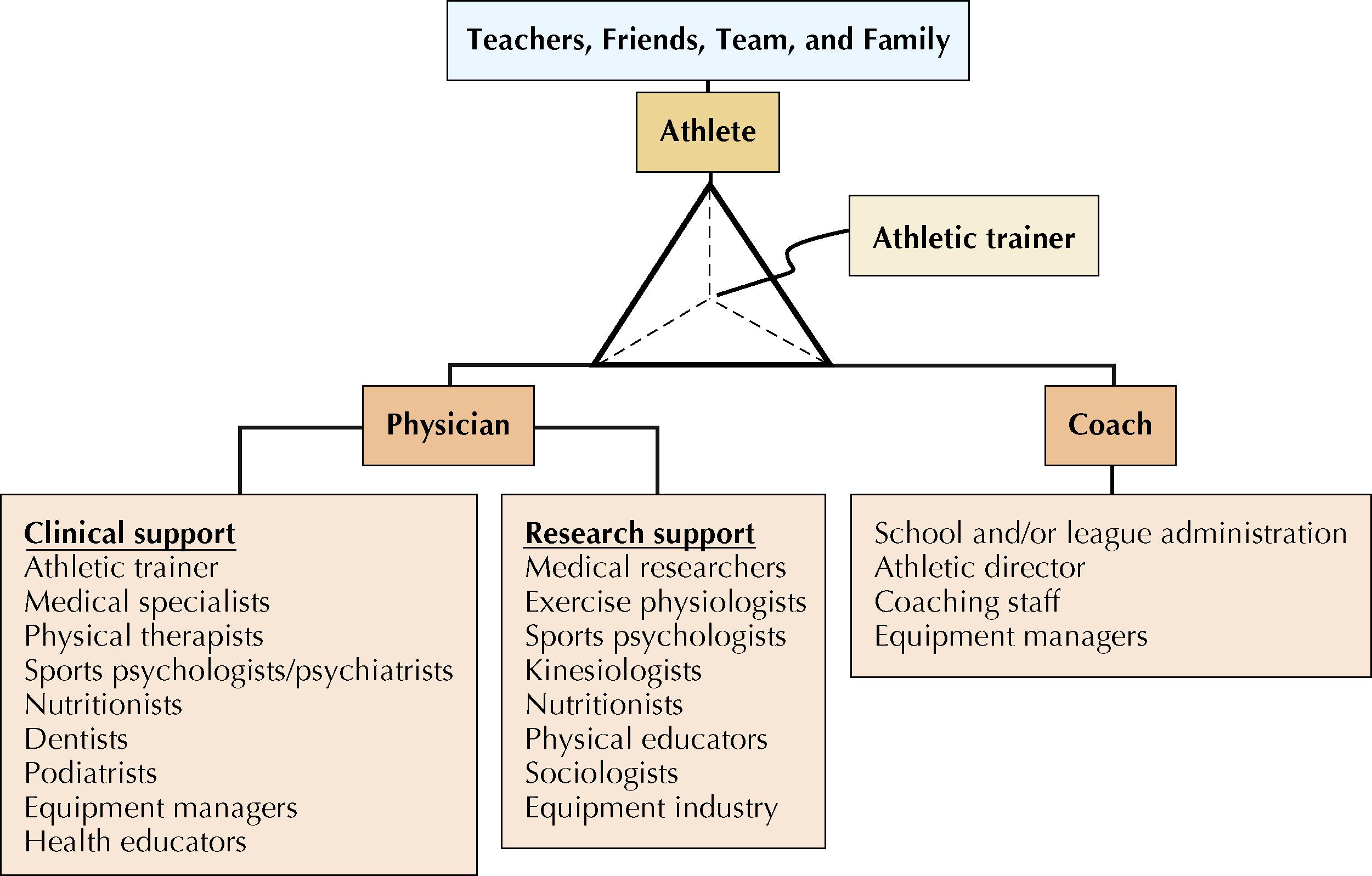Physical Address
304 North Cardinal St.
Dorchester Center, MA 02124
Team physicians have a unique responsibility of leadership while taking care of athletes.
Core skills include leadership; team building; shared decision-making and collaboration; good communication; and a mission guided by selfless service, trust, and integrity.
Athletes, their parents, and their team administrators expect team physicians to help guide decisions in terms of clearance to participate in the sport, as well as to assess and manage healthcare issues to ensure safe participation of athletes.
Such decisions may be required in a setting of intense time pressure, such as when required on the sidelines.
Team physicians may play a leadership role within an organization and may provide care for individuals and teams at mass-participation sporting events. In addition, team physicians have responsibilities and duties that are both medical and administrative, and these frequently include ethical and medicolegal issues.
This chapter discusses the requirements of a team physician in terms of medical qualifications, education, and roles and responsibilities.
Care of an athlete is a team effort, wherein members of a sports medicine team support each other for the benefit of the athlete and the athletic team.
An athletic trainer occupies a unique position at the center of the athletic healthcare triangle.
A team physician cares for the athletic team and also serves as a key player on the sports medicine team comprising the athlete, the team physician, the coach, the athletic trainer, and other supporting health professionals. Similar to the athletic team, sports medicine services are best provided following a team approach ( Fig. 1.1 ).

Availability is a cornerstone for the success of a team physician.
On the sidelines, at events, and during travel.
In the training room.
In the office: Team physicians may have to include special accommodations in their office schedules for athletes who require urgent medical attention.
After office hours and weekends: Most athletic activity happens outside a normal work day; thus, team physicians must accommodate this in their coverage considerations.
Video and digital communications, such as telehealth and email, may sometimes be appropriate settings to provide care and communicate with athletes.
Six major professional associations focusing on clinical sports medicine issues collaborated to develop guidance documents for team physicians.
These “Team Physician Consensus Conference” Statements (TPCCs) cover various topics for team physicians, including the definition of team physicians: TPCCs ( https://www.acsm.org/acsm-positions-policy/official-positions ) and Sideline Preparedness for the Team Physician: Consensus Statement ( https://pubmed.ncbi.nlm.nih.gov/11323559/ ).
The TPCCs defines the qualifications, roles, and responsibilities of team physicians along with providing guidelines for individuals and organizations seeking to select a team physician.
Other TPCCs are listed in “Recommended Readings” and provide resources that cover specific topics and populations.
The team physician must be a medical doctor (MD) or doctor of osteopathy (DO) with an unrestricted license in good standing and knowledge of on-field emergency care and basic cardiopulmonary resuscitation (CPR) techniques, as well as musculoskeletal injuries and medical and psychological issues that affect athletes.
Become a Clinical Tree membership for Full access and enjoy Unlimited articles
If you are a member. Log in here